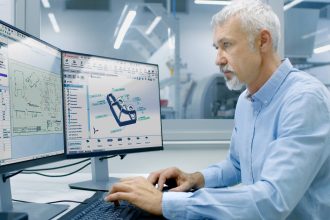Radio-frequency identification (RFID) tags and label products have been a go-to solution for warehouse management. They help warehouse owners keep control of their inventory. RFID makes use of an electromagnetic field for identifying and tracking tags and labels on objects. Such tags and labels have huge amounts of digitally stored information. They do not have to be within the reader’s line of sight.
Benefits of RFID Tags for Warehouse Management
TSC rfid labels are used in a lot of industries. For instance, they are attached to products or containers and used for tracking their whereabouts while they are in a warehouse. The ability to accurately track the location using the technology allows for precise and efficient warehouse management. Additionally, RFID technology offers increased visibility into investment management while products move from the warehouse to their next destination.
Other Benefits of RFID Technology
By implementing an RFID label warehouse management system, managers can minimize labor costs. With this technology, inventory check-in, picking times, inventory counts, and shipment verification can be completed in just seconds. The tags and labels are designed to be scanned in groups, minimizing the need to manually scan each item.
Often, RFID technology can more efficiently handle warehouse processes that used to be handled by several employees using barcodes and scanners. Also, some studies show that RFID systems can read an entire warehouse of inventory within just minutes, shrinking the inventory management process to hours instead of days or weeks.
Moreover, RFID technology can improve inventory location accuracy by giving real-time updates and quicker scanning. This is possible by strategically placing RFID readers at the doorways and throughout a warehouse. With barcodes, an item can be moved without being scanned, reducing the accuracy of inventory. Because RFID does not require human intervention for reading data, the reader can get the job done automatically.
RFID applications allow warehouse managers to see the number of items they have of any kind and their location or the stage of the process they are at. Managers can track items once they are received into stores, provided to manufacturers, and used in a finished product. As a result, it will be easier to manage inventory, check and audit stocks, as well as control shortage. Also, the technology can help locate misplaced items on site. Additionally, RFID can minimize asset loss and theft. RFID labels and tags offer a cost-effective way to decrease unnecessary expenses.





